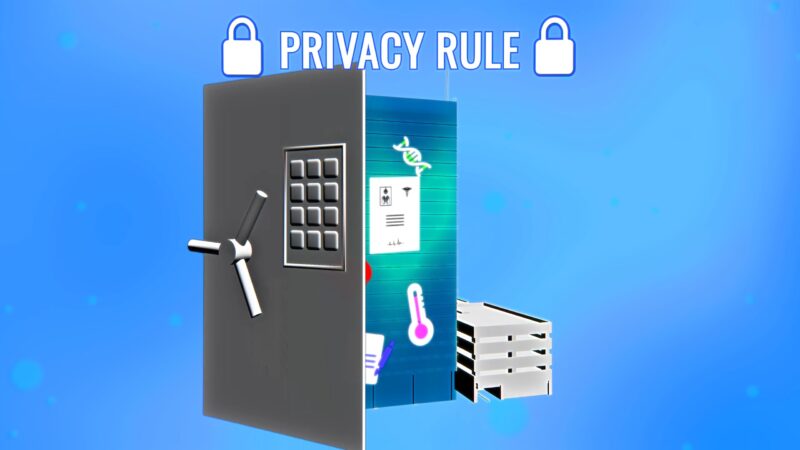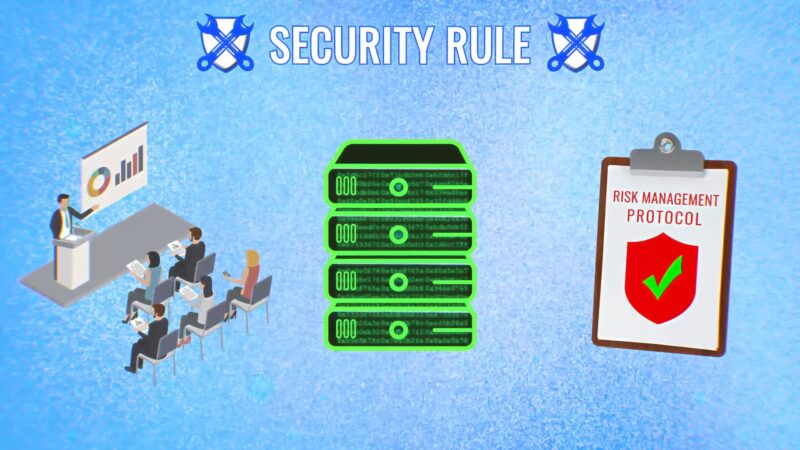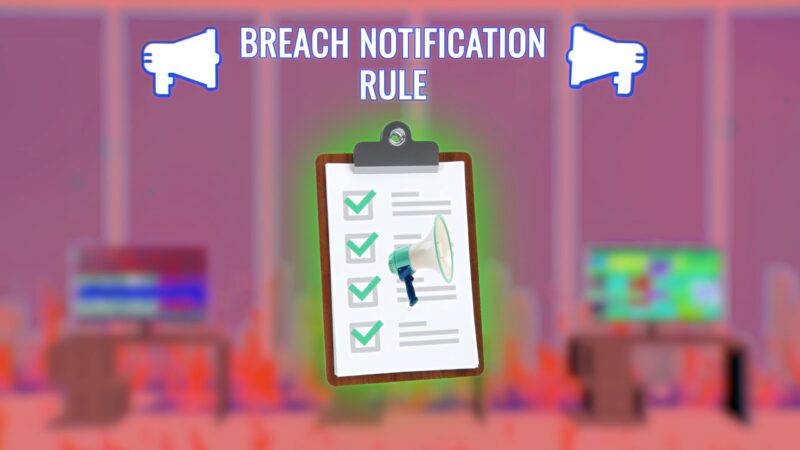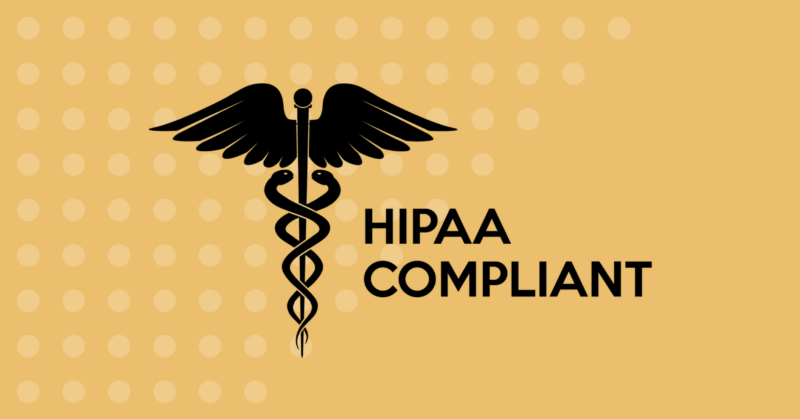HIPAA compliance is a critical aspect for healthcare providers, insurers, and any business dealing with protected health information (PHI). The Health Insurance Portability and Accountability Act (HIPAA), established in 1996, sets the standard for protecting sensitive patient data in the United States.
Adhering to HIPAA is not just a legal requirement but also a commitment to maintaining patient trust and integrity in healthcare services. It involves adhering to standards set for the protection and confidential handling of PHI.
This includes implementing physical, network, and process security measures. Entities covered by HIPAA must ensure that any PHI they handle is kept secure, with access limited to only those who need it to provide healthcare services.
Who Needs to Comply?
HIPAA applies to two main groups: covered entities and business associates. Covered entities include healthcare providers, health plans, and healthcare clearinghouses that handle PHI. Business associates are individuals or companies that perform services for these covered entities involving the use or disclosure of PHI.
What are the Key Rules?
HIPAA comprises several key rules:
- The Privacy Rule: This rule sets standards for how PHI should be used and disclosed. It gives patients rights over their health information, including rights to examine and obtain a copy of their health records and request corrections.
- The Security Rule: This rule requires covered entities to maintain reasonable and appropriate administrative, technical, and physical safeguards for protecting e-PHI (Electronic Protected Health Information).
- The Breach Notification Rule: This rule requires covered entities and their business associates to provide notification following a breach of unsecured PHI.
- The Omnibus Rule: This rule, finalized in 2013, implements a number of provisions of the HITECH Act to strengthen the privacy and security protections for health information established under HIPAA.
Here is a table with main features that will help you understand the meaning of these rules.
| Feature | Description |
|---|---|
| Privacy Rule | Sets standards for the use and disclosure of PHI, granting patients rights over their health information. |
| Security Rule | Requires appropriate administrative, technical, and physical safeguards to protect e-PHI. |
| Breach Notification Rule | Mandates notification following a breach of unsecured PHI. |
| Omnibus Rule | Strengthens privacy and security protections for health information under HIPAA. |
| Risk Assessment | Regular assessments to identify and mitigate vulnerabilities in PHI handling. |
| Training and Awareness | Regular training for employees on HIPAA regulations and the importance of protecting patient information. |
| Physical and Technical Safeguards | Measures to secure physical and electronic access to PHI, including encryption and secure storage. |
| Policies and Procedures | Development and implementation of clear policies for the use, disclosure, protection, and access to PHI. |
| Incident Response and Reporting | Defined response plan for security incidents or breaches, including containment and notification processes. |
| Vendor Management | Ensuring that business associates comply with HIPAA via Business Associate Agreements. |
| Compliance Audits | Regular audits to identify compliance gaps and updates in HIPAA regulations. |
Privacy Rule is Protecting Patient Rights and Data

The HIPAA Privacy Rule is a cornerstone of HIPAA compliance. It establishes national standards to safeguard individuals’ medical records and other personal health information (PHI). This rule applies to health plans, health care clearinghouses, and health care providers that conduct certain health care transactions electronically.
The Privacy Rule requires appropriate safeguards to protect the privacy of PHI, setting limits and conditions on the uses and disclosures that may be made of such information without patient authorization. The rule also gives patients rights over their health information, including rights to examine and obtain a copy of their health records, and request corrections.
A critical aspect of the Privacy Rule is the “minimum necessary” standard, which mandates that covered entities must take reasonable steps to ensure that access to PHI is appropriately limited.
This means that only the minimum necessary information needed for a specific purpose is used or disclosed. Another important element is the provision for patients to authorize the use of their health information for purposes not otherwise allowed by the Privacy Rule. For instance, a patient must give explicit permission before a provider can release their medical information for marketing purposes.
Security Rule is Safeguarding Electronic Protected Health Information

The Security Rule under HIPAA is specifically designed to protect Electronic Protected Health Information (e-PHI) when it is stored, accessed, or transmitted. This rule complements the Privacy Rule and is critical in the digital age where health information is increasingly stored and shared electronically.
Covered entities, under the Security Rule, are required to implement three types of safeguards: administrative, physical, and technical. Administrative safeguards are policies and procedures designed to clearly show how the entity will comply with the act. This includes conducting risk assessments and implementing risk management policies, sanctioning employees who fail to comply with the Security Rule, and reviewing records of information system activity, such as audit logs and access reports.
Physical safeguards involve controlling physical access to protect against inappropriate access to protected data. This includes facility access controls, workstation use, workstation security, and device and media controls. These controls ensure that only authorized personnel have access to e-PHI and that they access it in a manner that protects its confidentiality and integrity.
Breach Notification and Transparency in Data Breaches

The HIPAA Breach Notification Rule requires covered entities and their business associates to provide notification following a breach of unsecured PHI. Understanding and complying with this rule is crucial because it not only concerns the protection of sensitive data but also involves clear communication with patients and regulatory bodies in the event of a breach.
A breach is, generally, an impermissible use or disclosure under the Privacy Rule that compromises the security or privacy of the protected health information. The Breach Notification Rule sets standards for determining when a breach has occurred and outlines the protocol for notification. When a breach occurs, covered entities must quickly assess the situation.
This includes conducting a risk assessment to understand the nature and extent of the PHI involved, the unauthorized person who used the PHI or to whom the disclosure was made, whether the PHI was actually acquired or viewed, and the extent to which the risk to the PHI has been mitigated.
Notifications must be provided without unreasonable delay and in no case later than 60 days following the discovery of a breach. Notifications must be sent directly to the individuals affected by the breach. In instances where the breach affects more than 500 individuals, the covered entity must also notify the Secretary of Health and Human Services and the media.
Omnibus Rule for Enhanced Privacy
One of the key features of the Omnibus Rule is the expansion of HIPAA’s reach to include business associates of covered entities. Before this rule, only covered entities were directly liable for compliance with certain provisions of the HIPAA Rules.
Now, business associates and their subcontractors are also directly liable for compliance with certain requirements of the HIPAA Privacy and Security Rules. The rule also enhances the limitations on the use and disclosure of PHI for marketing and fundraising purposes and prohibits the sale of PHI without individual authorization.
It sets new limits on how information is used and disclosed for marketing and fundraising purposes and prohibits the sale of an individual’s health information without their permission. This is active even if you are running a nonprofit organization.
Additionally, the Omnibus Rule increases the penalties for non-compliance based on the level of negligence, with a maximum penalty of $1.5 million per violation. This increase in penalties underscores the importance of compliance and the serious consequences of failing to protect patient health information.
Risk Assessment and Management

Conducting a risk assessment involves a thorough evaluation of an entity’s entire IT infrastructure, including all electronic devices and systems that create, receive, maintain, or transmit e-PHI. The process should identify potential threats to the security of e-PHI, such as hacking, employee error, or system failure, and evaluate the current measures in place to protect against these threats.
Risk management involves implementing security measures sufficient to reduce risks and vulnerabilities to a reasonable and appropriate level. This can include updating security software, implementing more stringent access controls, encrypting e-PHI, and improving physical security measures.
Entities must also consider the likelihood and potential impact of risk scenarios to prioritize their risk management efforts. This includes considering the size, complexity, and capabilities of the entity; the entity’s technical infrastructure, hardware, and software security capabilities; the costs of security measures; and the probability and criticality of potential risks to e-PHI.
Proper Training is Also Essential
Training is essential because it ensures that all staff members, from administrative employees to medical professionals, understand the importance of HIPAA rules and their role in maintaining compliance. This understanding is crucial because every member of an organization can potentially impact the security and privacy of patient information.
The content of HIPAA training usually covers the basics of the Privacy and Security Rules, the rights of patients under HIPAA, and the organization’s specific policies and procedures for handling PHI. Additionally, training sessions often include information on recognizing and reporting breaches, understanding the consequences of non-compliance, and the importance of confidentiality.
It should not be a one-time event. Regular training sessions are necessary due to the evolving nature of healthcare, technology, and regulatory landscapes. Annually is a common frequency, but more frequent sessions may be needed when significant changes occur in regulations or organizational practices.
Combination of Physical and Technical Protection

Physical safeguards are essential in preventing unauthorized access to electronic information systems and facilities. These can include controlled facility access with secure entry points, security guards, surveillance cameras, and alarms. Moreover, policies for workstation use and security play a crucial role in ensuring that PHI is not accessible to unauthorized personnel or visible to passersby.
Additionally, physical safeguards involve proper device and media control, encompassing the disposal, re-use, and movement of electronic media containing PHI. Technical safeguards, on the other hand, are primarily focused on the technology that protects e-PHI and controls access to it. These safeguards are multifaceted and include access control, allowing only authorized personnel to access e-PHI.
Unique user identifications, emergency access procedures, and automatic logoff are components of this control. Encryption is another key element, safeguarding data integrity, especially during electronic transmission over networks.
Audit controls are also vital, tracking hardware, software, and procedural mechanisms that record and examine activity in information systems containing or using e-PHI. This includes monitoring log-in attempts and accessing patterns that might signal a breach.
Be Aware of Policies and Procedures
The formulation of these policies begins with a thorough understanding of HIPAA requirements. Organizations must then tailor these requirements to their specific operations, considering factors like the size of the entity, the type of PHI handled, and the technology in use.
Key components of these policies typically include how PHI is used and disclosed within the organization, the rights of patients regarding their information, and the measures implemented to safeguard PHI, both physically and electronically. They also encompass protocols for reporting and responding to breaches, should they occur.
Employee access to PHI must be governed by clear policies, ensuring that only those who need access for their job functions have it. This minimizes the risk of unauthorized access or disclosure. Additionally, these policies should address the transfer, removal, and disposal of PHI, ensuring that data is not inadvertently exposed or compromised.
Regular updates are essential, given the evolving nature of technology, healthcare practices, and regulatory landscapes. These updates ensure that the organization’s practices remain in alignment with current legal requirements and industry best practices.
Incident Response and Reporting
An incident response plan should be comprehensive, detailing the steps to be taken from the moment a potential breach is detected. This includes the immediate containment and mitigation of the breach, assessment of its scope and impact, and identification of the affected individuals.
Notification is a critical component of the response plan. HIPAA mandates specific timelines and content for breach notifications to affected individuals, the Department of Health and Human Services (HHS), and, in some cases, the media.
Timely notification not only complies with legal requirements but also helps maintain trust with patients. The plan should also include procedures for investigating the incident.
This involves determining how the breach occurred, the type of information involved, and measures to prevent similar incidents in the future. Documentation is key throughout this process, as it provides a record of the incident and the organization’s response, which is crucial for compliance and legal purposes.
Protect Your Clients with Vendor Management
A critical tool in managing these third-party relationships is the Business Associate Agreement (BAA). BAAs are legally binding contracts that outline the responsibilities of the business associate regarding the handling of PHI. They ensure that the associates are aware of their obligations under HIPAA and agree to adhere to the same standards of privacy and security as the covered entity.
The process of vendor management includes due diligence before entering into a contract. This involves assessing the vendor’s data security measures, compliance history, and their understanding of HIPAA requirements. Continuous monitoring of the vendor’s compliance status is also important. This might involve regular audits or assessments to ensure they adhere to the agreed-upon standards.
In the event a vendor fails to comply with HIPAA, the covered entity is required to take reasonable steps to remedy the situation. If the issue cannot be resolved, the covered entity must terminate the contract. If termination is not feasible, the covered entity must report the problem to the HHS.
Compliance Audits to Prevent Non-Compliance
Internal audits are conducted by the organization itself or by hired external experts. These audits provide an opportunity for self-assessment and proactive improvement. They help identify gaps in compliance before they become serious issues or result in breaches.
External audits, such as those conducted by the Office for Civil Rights (OCR), are more formal and can be triggered by a variety of factors, including complaints, breaches, or as part of a random audit program.
These audits are more rigorous and can lead to penalties if non-compliance is found. Regardless of the type, effective audits involve a thorough examination of documentation, practices, and systems. They also often include interviews with staff to assess their understanding and implementation of HIPAA requirements.
FAQs
Can a small healthcare practice be exempt from HIPAA compliance?
No, small healthcare practices are not exempt from HIPAA compliance. Any healthcare provider, regardless of size, that transmits health information in electronic form in connection with a transaction for which the Department of Health and Human Services has adopted a standard, must comply with HIPAA regulations.
How often should HIPAA training be refreshed for employees?
HIPAA does not specify an exact timeframe for training refreshment, but it is generally recommended that employees undergo HIPAA training at least once a year.
Is encrypted email required when sending PHI electronically?
While HIPAA does not explicitly require encryption, it mandates that covered entities must implement reasonable and appropriate safeguards to protect e-PHI. Encryption is a widely recognized method for securing e-PHI in transit, and therefore, using encrypted email when sending PHI electronically is considered a best practice.
Can patients request changes or deletions to their PHI under HIPAA?
Patients have the right under HIPAA to request amendments to their PHI, but they do not have the right to demand deletions. Healthcare providers are required to consider such amendment requests, but they are not obligated to make all requested changes if they believe the information is accurate and complete.
What is the penalty for non-compliance with HIPAA?
Penalties for HIPAA non-compliance can vary significantly based on the severity and nature of the violation. Fines can range from $100 to $50,000 per violation, with a maximum annual limit of $1.5 million for identical violations. In severe cases, such as willful neglect of compliance, criminal charges could also be filed.
Last Words
The principles and practices discussed, while specific to HIPAA, reflect a broader need for thorough understanding, careful implementation, and ongoing management of compliance protocols in any sector. This approach not only ensures adherence to legal standards but also fosters a culture of trust and responsibility, crucial in any organization handling sensitive data or operating in regulated environments.
